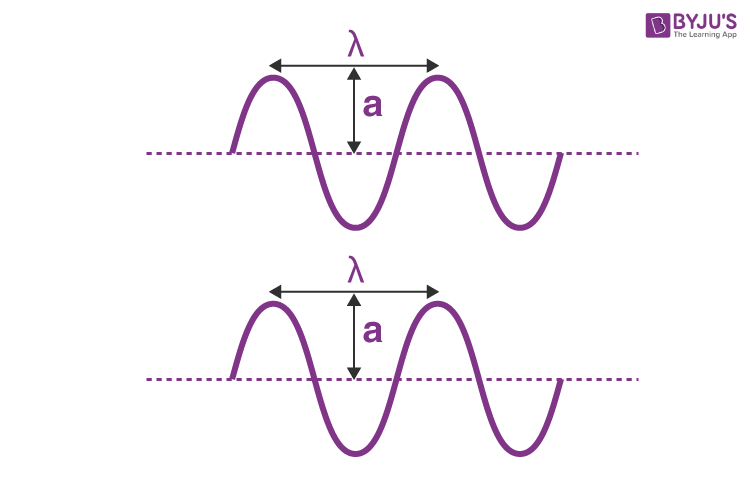Interference is a natural phenomenon that happens at every place and at every moment. Yet we don’t see interference patterns everywhere. Interference is the phenomenon in which two waves superpose to form the resultant wave of the lower, higher or same amplitude. The most commonly seen interference is the optical interference or light interference. This is because light waves are randomly generated every which way by most sources. This means that light waves coming out of a source do not have a constant amplitude, frequency or phase.
The most common example of interference of light is the soap bubble which reflects wide colours when illuminated by a light source.
Example, incandescent bulbs generate a wide range of frequencies of light, including all colours of the rainbow. Moreover, the light coming out of the bulb is randomly generated every moment in all directions. This means that the starting point of the wave generated may be a maximum, a minimum or any point in between. There is no way of predicting in which phase the wave will start. Such a source is said to be incoherent.
What are Coherent Sources?

Two sources are said to be coherent when the waves emitted from them have the same frequency and constant phase difference.
Interference from such waves happen all the time, the randomly phased light waves constantly produce bright and dark fringes at every point. But, we cannot see them since they occur randomly. A point that has a dark fringe at one moment may have a bright fringe at the next moment. This cancels out the effect of the interference effect, and we see only an average brightness value. The interference is not said to be sustained since we cannot observe it.
Related Articles:
| Difference Between Diffraction and Interference |
| Single Slit Diffraction |
| Young’s Double Slits Experiment Derivation |
Characteristics of Coherent Sources
Coherent sources have the following characteristics:
- The waves generated have a constant phase difference
- The waves are of a single frequency
Coherent Source Example
- Laser light is an example of coherent source of light. The light emitted by the laser light has the same frequency and phase.
- Sound waves are another example of coherent sources. The electrical signals from the sound waves travel with the same frequency and phase.
Types of Interference
Interference of light waves can be either constructive interference or destructive interference.
- Constructive interference: Constructive interference takes place when the crest of one wave falls on the crest of another wave such that the amplitude is maximum. These waves will have the same displacement and are in the same phase.
- Destructive interference: In destructive interference the crest of one wave falls on the trough of another wave such that the amplitude is minimum. The displacement and phase of these waves are not the same.
Young’s Double Slit Experiment

The great scientist Young’s performed an experiment to prove the wave nature of light by explaining the phenomenon of interference of light. In the Young’s double slit experiment, two coherent sources were generated using diffracted light from a single slit. Note that the waves must have a constant phase difference, so the two slits need not be placed symmetrically from the first slit to observe an interference pattern.
Lasers are commonly used as coherent sources and use a phenomenon called Simulated Emission to generate highly coherent light. Small sources of light are at least partially coherent. This is why we can observe interference patterns on soap bubbles and appreciate the iridescence of butterfly wings. While sunlight is incoherent overall, small portions on small areas are generally partially coherent.
Conditions for Interference of Light Waves
For sustained interference of light to occur, the following conditions must be met:
- Coherent sources of light are needed.
- Amplitudes and intensities must be nearly equal to produce sufficient contrast between maxima and minima.
- The source must be small enough that it can be considered a point source of light.
- The interfering sources must be near enough to produce wide fringes.
- The source and screen must be far enough to produce wide fringes.
- The sources must emit light in the same state of polarization.
- The sources must be monochromatic.
Frequently Asked Questions – FAQs
What is interference?
Interference is the phenomenon in which two waves superpose to form the resultant wave of the lower, higher or same amplitude.
What are the types of light interference?
- Constructive interference
- Destructive interference
What are the characteristics of coherent interference?
Coherent sources should have the following characteristics:
- The waves generated have a constant phase difference
- The waves are of a single frequency
Name the experiment performed to prove interference of light.
Give some examples to prove interference of light.
- Soap Bubble which reflects spectrum of light
- Floating film of oil on water
- Colours generated by incandescent bulbs
Stay tuned with BYJU’S for more such interesting articles. Also, register to “BYJU’S – The Learning App” for loads of interactive, engaging Physics-related videos and an unlimited academic assist.




Comments